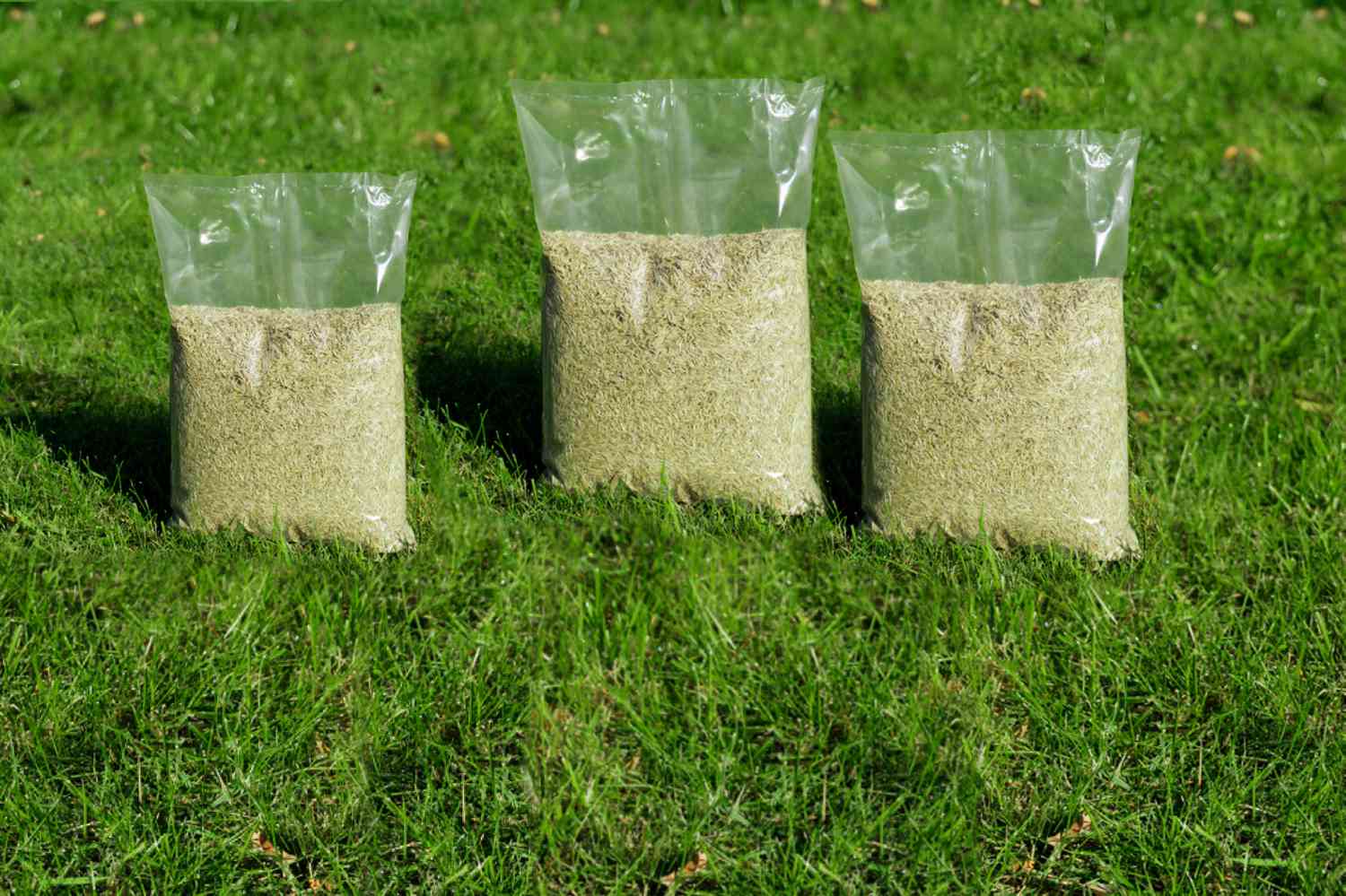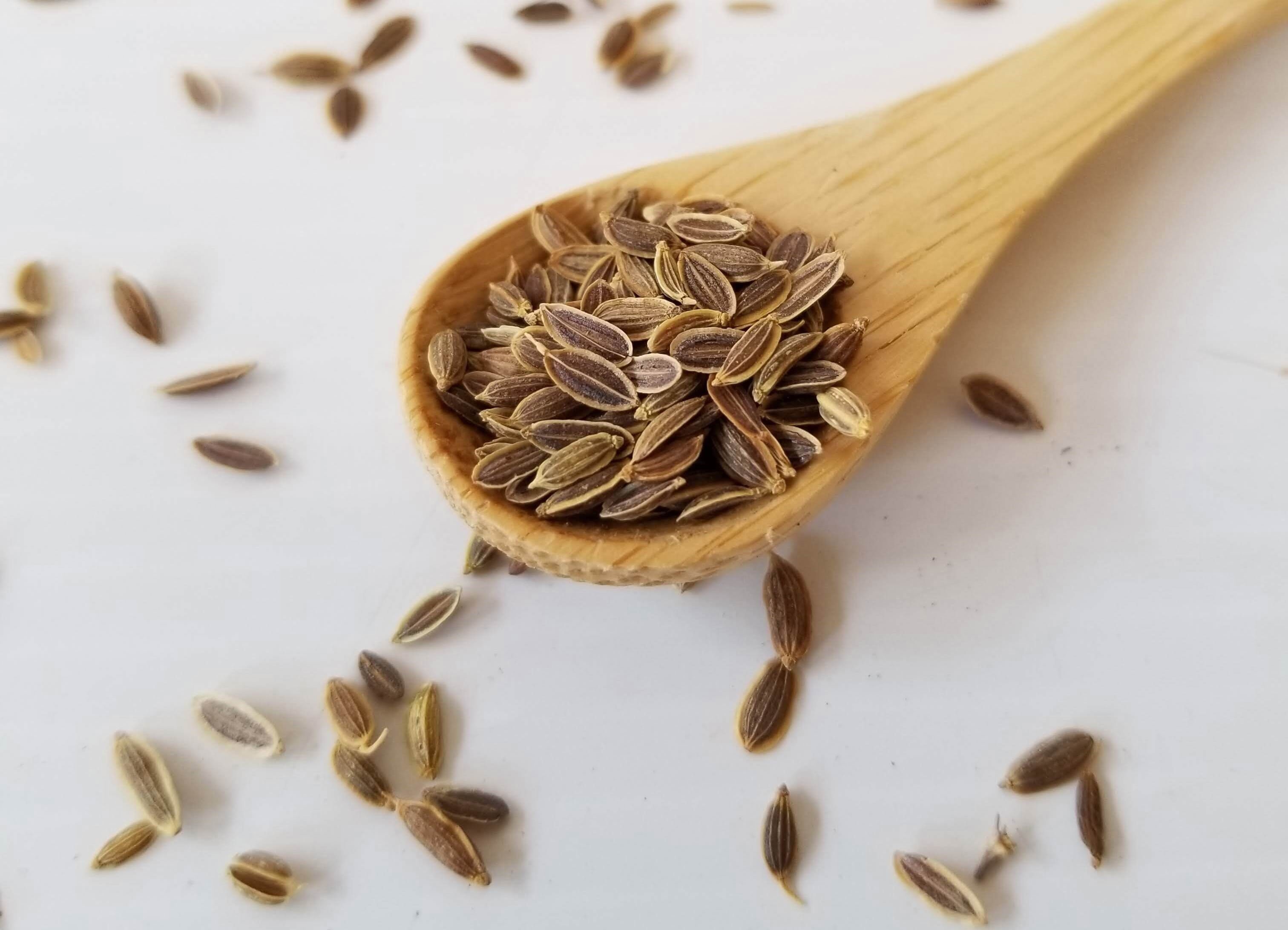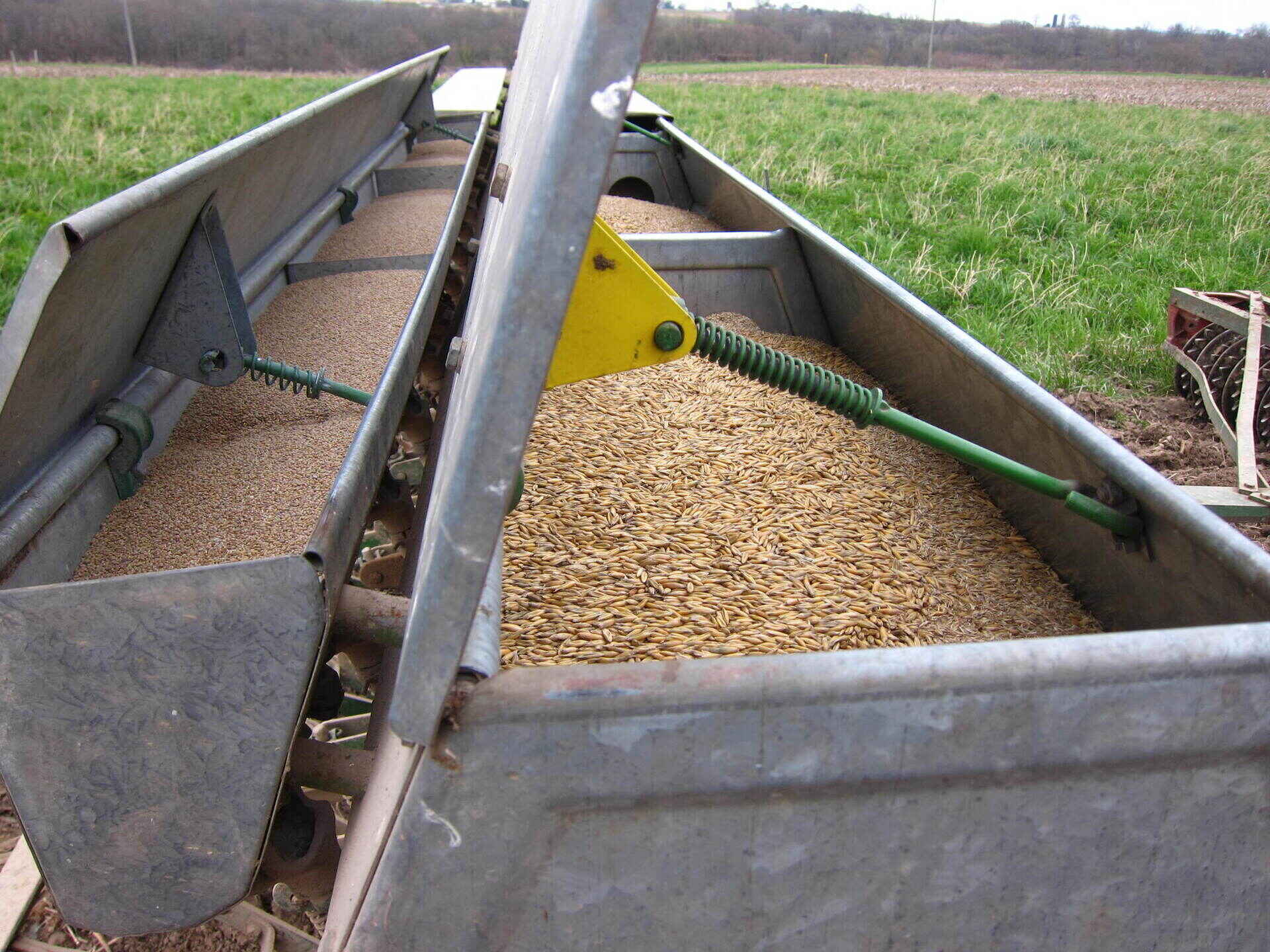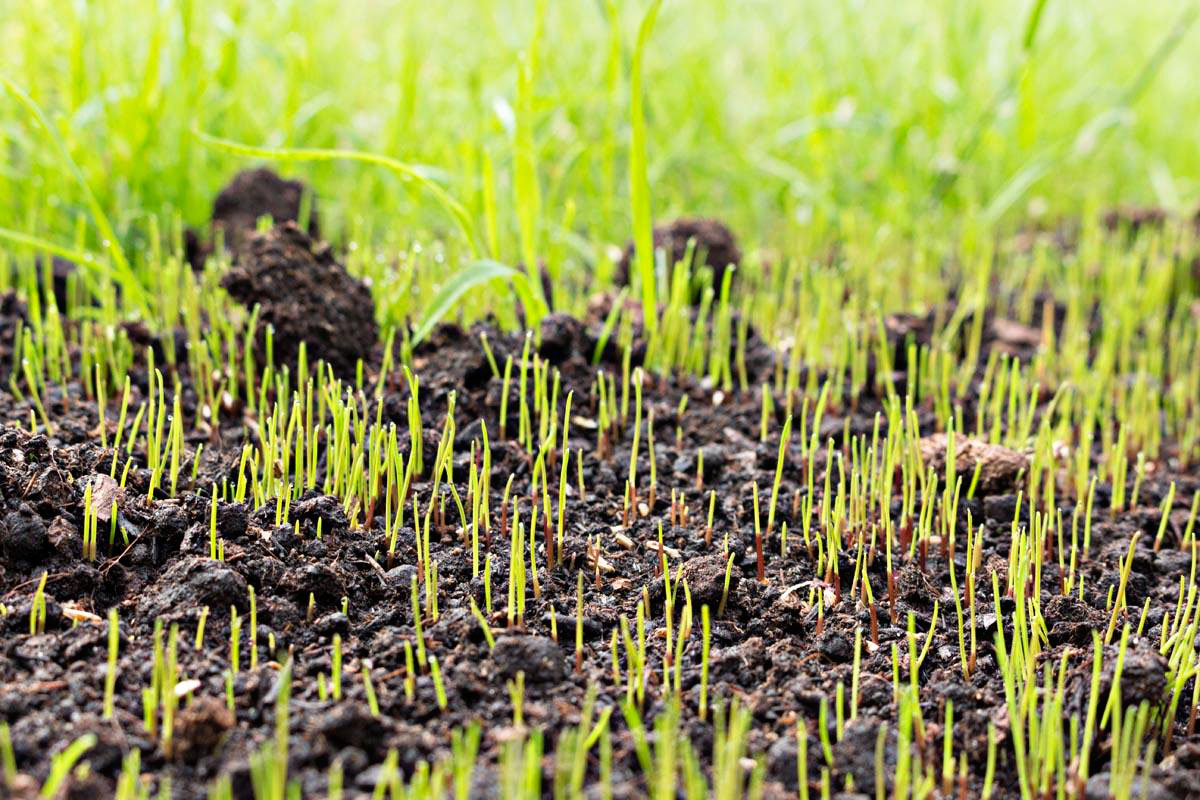Home>Garden Essentials>How Much Hay Seed Per Acre


Garden Essentials
How Much Hay Seed Per Acre
Modified: April 22, 2024
Discover how much hay seed you need per acre for your garden and maximize your crop yield. Find helpful tips and guidelines to ensure successful cultivation.
(Many of the links in this article redirect to a specific reviewed product. Your purchase of these products through affiliate links helps to generate commission for Storables.com, at no extra cost. Learn more)
Introduction
Welcome to our comprehensive guide on the amount of hay seed to use per acre. If you are a farmer or a gardener looking to establish a healthy and productive hay field, it is crucial to have a good understanding of the optimal hay seed per acre. Getting the right amount of seed will ensure proper germination, density, and overall growth, leading to a successful hay crop.
Hay is an essential feed source for livestock, providing them with the necessary nutrients and energy. Whether you are growing hay for personal use or to sell, maximizing the yield is key. Determining the correct amount of hay seed per acre is influenced by several factors, including seed variety, soil type, climate conditions, and desired hay quality.
In this guide, we will discuss the factors affecting hay seed per acre, optimal seeding rates, how to calculate the amount of seed required, and best practices for successful hay seeding. By following these guidelines, you can achieve a healthy and abundant hay yield.
So let’s dive in and explore the various elements that will help you make informed decisions about how much hay seed to use per acre!
Key Takeaways:
- Proper hay seeding rates depend on factors like seed variety, soil type, and climate conditions. Calculating the right amount of seed per acre ensures healthy hay growth and abundant yield.
- Best practices for hay seeding include soil preparation, seed distribution, moisture management, and weed control. Following these guidelines leads to a thriving and productive hay field.
Read more: How Much Ryegrass Seed Per Acre
Factors Affecting Hay Seed Per Acre
Several factors impact the amount of hay seed you should use per acre. Understanding these factors will help you make informed decisions to achieve optimal growth and yield in your hay field. Let’s explore the key factors:
- Seed Variety: Different seed varieties have varying recommended seeding rates. Some varieties may require more seeds per acre for proper establishment, while others may require less. Consider the specific characteristics of the seed variety you are using and consult the seed supplier or agricultural extension office for guidance.
- Soil Type: Soil composition and texture play a significant role in determining the amount of seed required. Sandy soils, for example, are more porous and may require higher seeding rates to compensate for potential seed loss due to leaching. On the other hand, clay soils may need lighter seeding rates to prevent overcrowding and competition among plants.
- Climate Conditions: The local climate, including temperature and rainfall patterns, affects hay seed germination and growth. In regions with shorter growing seasons or harsh weather conditions, higher seeding rates may be necessary to ensure a dense stand of hay plants.
- Desired Hay Quality: The quality of hay you aim to produce also influences the seeding rate. If you strive for high-quality hay with finer stems and increased nutritional content, you might opt for a higher seeding rate. Conversely, if you prioritize hay quantity over quality, a lower seeding rate might be sufficient.
- Seed Viability: The viability of the hay seed, or its ability to germinate and produce healthy plants, can vary. It is essential to use fresh, high-quality seed with good viability. If you have older seed or seed with lower germination rates, you may need to increase the seeding rate to compensate for potential low germination percentages.
It is essential to consider these factors collectively to determine the optimal hay seed per acre for your specific circumstances. Experimentation, observation, and consultation with local experts can help you fine-tune the seeding rate for the best results. So be sure to assess and analyze these factors before deciding on the correct amount of hay seed to use per acre.
Optimal Hay Seeding Rates
Determining the optimal seeding rate for your hay field is crucial for achieving a successful and productive crop. The recommended seeding rates can vary depending on factors such as seed variety, soil type, climate conditions, and hay quality goals. Here are some general guidelines to help you determine the optimal hay seeding rates:
- Grass Hay Varieties: For grass hay varieties, the recommended seeding rates typically range between 20 to 30 pounds per acre. This range ensures good ground coverage and sufficient density for healthy plant growth and hay production.
- Legume Hay Varieties: Legume hay varieties, such as alfalfa or clover, generally require higher seeding rates compared to grasses. The recommended seeding rates for legume hay can range from 8 to 15 pounds per acre.
- Mixture of Grass and Legume: If you plan to establish a hay field with a mixture of grass and legume species, the recommended seeding rates typically fall in the range of 10 to 25 pounds per acre. The exact ratio of grass to legume seeds may vary depending on your specific goals and local conditions.
- Overseeding or Re-Seeding: If you are overseeding an existing hay field or re-seeding a damaged area, it is advisable to increase the seeding rate. Over-seeding rates can be 50% to 100% higher than the initial seeding rates to account for existing vegetation and potential seed loss.
- Pasture versus Hay Production: If you are establishing a hay field primarily for grazing purposes and not for hay production, you can reduce the seeding rate to allow for proper forage growth and regrowth.
It is important to note that these seeding rates are general guidelines and should be adjusted based on your specific circumstances. Consulting with local agricultural experts or seed suppliers is highly recommended to ensure you choose the most appropriate seeding rates for your hay field.
Remember, proper seeding rates are essential for achieving a dense stand of healthy plants, maximizing yield, and maintaining good hay quality. Finding the optimal balance is key to successful hay production.
For a typical grass hay, you’ll need 15-20 pounds of seed per acre. For legume hay, aim for 6-8 pounds per acre. Adjust based on local conditions.
Calculating Hay Seed Per Acre
Calculating the amount of hay seed required per acre is a critical step in planning for a successful hay crop. By determining the number of seeds needed, you can ensure proper seeding density and achieve optimal growth and yield. Here is a step-by-step guide to help you calculate the hay seed per acre:
- Determine the Seeding Rate: Start by determining the recommended seeding rate for the specific hay variety you are using. This information can be obtained from seed suppliers, agricultural extension offices, or local experts.
- Measure the Field Size: Measure the area of the field in acres where you intend to sow the hay seed. If the field has an irregular shape, break it down into smaller sections and measure them separately.
- Calculate the Seed Quantity: Multiply the seeding rate (in pounds per acre) by the field size (in acres). This will give you the total amount of seed required for the entire field. For example, if the recommended seeding rate is 25 pounds per acre and your field is 5 acres, the calculation would be: 25 pounds/acre x 5 acres = 125 pounds of seed.
- Adjust for Seed Quality: Consider the germination rate and purity of the seed. If you have seed with a lower germination rate, increase the calculated seed quantity accordingly to compensate for potential lower success in germination. For example, if the seed has a germination rate of 80%, you may need to increase the calculated seed quantity by 20% to account for the lower germination rate.
- Account for Seeding Method: The seeding method you plan to use can also affect the amount of seed required. For instance, broadcasting the seed may require a higher seeding rate compared to using a drill or planter, as some seeds may not reach the intended target area when broadcasted.
- Consider Seed Variability: Different seed varieties can have variations in seed weight. Be mindful of this and adjust the calculated seed quantity if you are using a seed variety with significantly different seed weight.
By following these steps and taking into account seed quality, seeding method, and seed variability, you can accurately calculate the amount of hay seed required per acre. This will help you ensure optimal seed density, maximize hay yield, and promote healthy hay growth for successful hay production.
Best Practices for Hay Seeding
Proper hay seeding practices are crucial for establishing a healthy, productive, and long-lasting hay field. By following these best practices, you can increase the chances of successful germination, optimal growth, and abundant hay yield. Here are some key guidelines to keep in mind:
- Soil Preparation: Before seeding, prepare the soil by removing any weeds, rocks, or debris that may hinder seed establishment. Ensure the soil is adequately leveled and loose to promote good seed-to-soil contact.
- Seedbed Preparation: Create an optimal seedbed by tilling the soil to a depth of 4-6 inches. This helps break up compacted soil, improves drainage, and allows the hay seeds to establish a strong root system.
- Seed Distribution: Distribute the hay seeds evenly across the field to ensure uniform coverage. This can be done by using a calibrated seed spreader, drill, or planter. Avoid clumping or over-concentration of seeds in specific areas to prevent overcrowding and competition among plants.
- Seeding Depth: The ideal seeding depth may vary depending on the variety of hay seed being used. As a general guideline, aim to plant the seeds at a depth of 1/4 to 1/2 inch. Consult seed supplier recommendations for specific seeding depths, as some seeds may require different planting depths for optimal germination.
- Moisture Management: Adequate moisture is essential for hay seed germination and establishment. Ensure the seeded area receives sufficient water during the initial germination period. Monitor soil moisture levels and irrigate as necessary to promote healthy seedling growth.
- Weed Control: Weed competition can significantly impact hay yield and quality. Implement effective weed control practices to minimize weed growth and competition with the hay plants. This includes regular scouting, timely herbicide application, and cultural weed management techniques.
- Fertilization: Conduct a soil test before seeding to determine the nutrient levels and pH of the soil. Based on the test results, apply the necessary fertilizers to provide the essential nutrients for optimal hay growth. Follow recommended fertilizer application rates and timings.
- Maintenance and Mowing: Regular maintenance, such as mowing, can help promote dense growth, reduce weed competition, and improve hay quality. Mow the hay field at the proper height, allowing for sufficient regrowth while preventing stress on the plants.
- Harvesting: Time the hay harvesting process appropriately to ensure peak quality and nutritional value. Harvesting too early or too late can impact taste, nutrient content, and overall hay quality. Consider local growing conditions and specific hay variety recommendations for ideal harvesting time.
By implementing these best practices, you can set a solid foundation for a thriving hay field. Regular monitoring, timely interventions, and continuous care are vital for maintaining the health and productivity of the hay crop.
Read more: How Much Sorghum Seed Per Acre
Conclusion
Establishing a successful hay field requires careful consideration of various factors, including the amount of hay seed to use per acre. By understanding the factors that influence seeding rates, calculating the appropriate amount of seed, and implementing best practices, you can optimize your hay crop’s growth and yield.
Factors such as seed variety, soil type, climate conditions, desired hay quality, and seed viability all play a role in determining the optimal seeding rate. Taking these factors into account, along with expert advice and local knowledge, will help you make informed decisions about the amount of hay seed to use per acre.
Calculating the hay seed per acre involves measuring the field size, determining the seeding rate, and adjusting for seed quality, seeding method, and seed variability. By following these calculations accurately, you can ensure proper seed density and maximize germination success, leading to a healthy and abundant hay crop.
Adhering to best practices for hay seeding is crucial for establishing a thriving hay field. Proper soil preparation, seed distribution, seeding depth, moisture management, weed control, fertilization, and maintenance contribute to the long-term success of your hay crop. Regular monitoring, timely interventions, and good farming practices are essential for maintaining optimal hay growth and quality.
In conclusion, understanding the factors that influence hay seed per acre, calculating the appropriate amount of seed, and implementing best practices will help you establish a productive and sustainable hay field. By following these guidelines and taking into account your specific circumstances, you can enjoy a bountiful harvest and provide quality hay for your livestock or commercial purposes.
Remember to stay informed, adapt to local conditions, and seek advice from agricultural experts to ensure the best outcomes for your hay seeding endeavors. With careful planning and proper execution, you can create a thriving hay field that will meet your agricultural goals for years to come.
Frequently Asked Questions about How Much Hay Seed Per Acre
Was this page helpful?
At Storables.com, we guarantee accurate and reliable information. Our content, validated by Expert Board Contributors, is crafted following stringent Editorial Policies. We're committed to providing you with well-researched, expert-backed insights for all your informational needs.















0 thoughts on “How Much Hay Seed Per Acre”